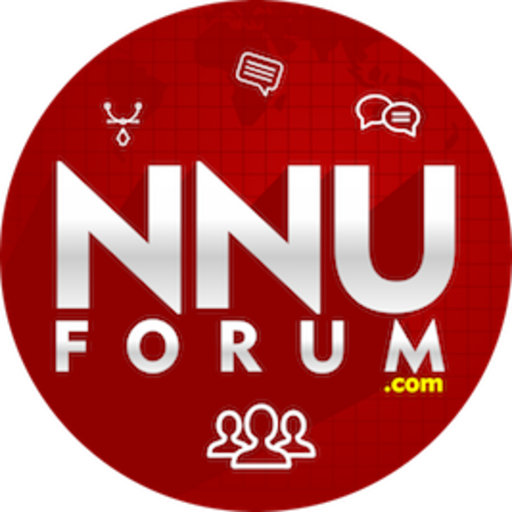AI Will Make The ‘Infinite Workday’ Worse — Unless We Act Differently

A lack of workplace boundaries has many employees feeling burned out.
The modern workday has lost its boundaries. Microsoft’s latest research, drawing on trillions of anonymized productivity signals from Microsoft 365 users worldwide, reveals a workforce under siege: 40% of employees are checking email by 6 a.m., a third are back online at 10 p.m. and nearly 20% are working through their weekends. The average worker receives 117 emails and 153 Teams messages daily, interrupted by meetings, notifications or new requests every two minutes. Half of all meetings fall during peak productivity hours, leaving little room for deep, focused work. You might be tired from just reading that.
This infinite workday is fueled by the realities of global teams and hybrid work, along with unreasonable expectations of constant availability. The result? A workforce struggling to keep up: One in three employees says the pace of work over the past five years has become impossible to keep up with. According to a Deloitte study, nearly half of workers from Generation Z (46%) and four in ten millennials (39%) say heavy workloads and poor work-life balance make them feel stressed or anxious at work all or most of the time. Work spills into every corner of life, erasing the boundaries between productivity and burnout.
Something must be done.
The AI Paradox: Productivity Or Overload?
Will AI help? AI and intelligent agents promise to automate routine tasks, streamline workflows and free up time for more meaningful work. Indeed, Microsoft’s own vision of the “Frontier Firm” as identified in the company’s 2025 Work Trend Index is one where teams are made up of humans and AI agents working together. The goal of these human-agent teams is to operate with agility, using AI to automate low-value work and empower employees to focus on strategy and creativity.
Yet Microsoft also warns that if organizations use AI simply to speed up existing processes — without rethinking how they organize work — they risk accelerating digital exhaustion and making the infinite workday even more pervasive.
It’s important to acknowledge that Microsoft isn’t a neutral observer here. The company thrives when organizations use its tools to be more productive, more connected and more “always-on.” Its latest innovations, while genuinely useful in the right contexts, are also savvy attempts to position Microsoft as the indispensable architect of the new workday. After all, if the problem is too much Microsoft in your life, the solution, according to Microsoft, is more Microsoft — but this time with AI.
So of course Microsoft, whose platforms are central to the digital sprawl it now warns against, has a ready suite of solutions. The announcements at the company’s recent Build conference touted multi-agent orchestration for complex tasks, advanced analytics for workload management and new AI-powered Copilots that can be tuned to an organization’s workflows. Microsoft suggests that these features can help organizations redesign work around outcomes rather than activities and give employees more control over their time and focus.
Even so, Microsoft warns against the potential hazards of relying too heavily on AI. The company surveyed 319 knowledge workers to understand how generative AI affects critical thinking in professional settings. The findings indicate that higher confidence in generative AI is associated with reduced critical thinking effort. However, individuals who are less confident about generative AI are more likely to think critically when using AI tools. The essential nature of thinking also shifts: instead of generating original ideas or solutions, users focus more on verifying information, integrating AI responses and overseeing tasks. Although it’s clear that generative AI can improve efficiency, it may also lead to less independent problem-solving, especially in routine or low-stakes tasks, which raises concerns about long-term reliance on AI and diminished cognitive engagement.
Professionals should use these systems strategically by leveraging automation to increase capacity while maintaining analytical rigor. Along the way, it’s essential to actively verify, contextualize and integrate AI outputs. This ensures that critical thinking remains a fundamental aspect of decision making. By doing this, professionals can preserve their judgment and domain expertise, and maximize the value of AI as a collaborative partner to amplify human intelligence.
Industry Approaches To Managing Work Overload
Microsoft is far from alone in grappling with the challenges of a stretched workforce and the implications of AI. Leading organizations across industries are rethinking work rhythms and investing in employee wellbeing:
- Outcome-Driven Cultures — Cisco’s approach to an outcome-driven culture centers on measuring employee performance by results, principles and behaviors, and team impact rather than hours worked. Leaders and employees align on specific, objective metrics relevant to their business units, such as sales targets or key performance indicators. This should encourage employees to set boundaries and prioritize high-impact work.
- Flexible Work and Wellbeing — Companies such as Salesforce, Intuit and IBM have long championed flexible hours, remote work and generous PTO, recognizing that sustainable productivity depends on employee wellbeing. Construction tech company Procore takes a companywide Wellness Week in the first week of July, providing a dedicated period for staff to disconnect from work and focus on their well-being. This initiative allows employees to recharge, ideally so they can return to work with renewed energy and fresh perspectives. The company says that the timing of Wellness Week, which splits the year into two manageable halves, helps prevent burnout and supports sustained high performance throughout the year. These efforts also align with industry needs. According to the Center for Workplace Mental Health, 77% of construction CEOs, presidents and owners said addressing mental health at work is a priority.
- Meeting-Free Days and Focus Time — Asana, to take one example, has implemented meeting-free Wednesdays and “flow time” to allow employees to have uninterrupted focus or collaboration time.
- Real-Time Incentives and Rewards — Some companies are working to counteract the workplace stresses highlighted in this piece by offering targeted solutions that help boost employee satisfaction and guide behaviors. For example, Whistle Rewards provides organizations with a system for issuing real-time incentives and rewards. Managers can immediately recognize employees, subcontractors or vendors for specific actions, such as following safety protocols or adopting new technologies. The platform automates distributing spot rewards and bonuses, delivering payments electronically via mobile or e-mail, and allowing recipients to access funds instantly. This immediacy is critical, according to Whistle Rewards president Chris Dornfeld. “Timely recognition is critical for driving real behavior change. The impact of a reward drops by about 5% every day it’s delayed, so immediate recognition creates a stronger connection between the action and the reward,” he told me. “Our experience and behavioral science show that frequent, prompt and even small rewards are far more effective than larger rewards given later.”
Each of these companies shows that the solution to the infinite workday is not just technology but also a combination of flexible policies, cultural change and leadership that values meaningful outcomes over constant activity.
Evolving Solutions: Digital Tools And Emerging Guardrails
Flexibility must come with intelligent guardrails, but what do those look like today, and what’s still on the horizon? Right now, digital workplace tools — whether from Microsoft, Google, Slack or others — are starting to help organizations monitor work sprawl. Analytics platforms offer data on work patterns, interruptions and after-hours activity, allowing leaders to spot trends of overload and digital exhaustion. AI-powered assistants can also be configured (at least in theory) to reduce cognitive load and help employees focus, for example by prioritizing which notifications get through during peak productive hours or as a critical deadline is approaching.
Some solutions are more direct. For example, Zoom’s Agenda Timer feature allows meeting organizers to set specific time limits for each agenda item and display these timers within the video call interface. This function provides a visible structure for discussions, helping participants monitor how time is being allocated and when agenda items are approaching their scheduled end. By making time boundaries explicit during meetings, the timer can encourage more focused discussions and may help prevent meetings from extending into time set aside for other work or personal responsibilities.
The general trend is for technology tools that can intervene on behalf of workers’ well-being before issues escalate. Solutions are still in early stages, but they include such measures as proactive reminders to take breaks (much like how wearables prompt users to move), real-time detection of stress or fatigue, automated boundary-setting for late-night work (when research shows that returns diminish) and AI-driven workload management. For example, Atlassian’s Jira platform now allows third-party integrations that monitor team stress, predict burnout risks and provide AI-based recommendations and alerts.
While these developments mark progress, more advanced capabilities such as real-time biometric or voice analysis, fully automated boundary management and seamless workload redistribution are still largely experimental and not yet standard practice in most organizations.
The Path Forward With Technology And Boundaries
The aim of these new measures is not to restrict flexibility or become too prescriptive about work hours, but rather to provide systems that foster healthy, sustainable work habits, even as work extends beyond traditional schedules and venues. I said above that something must be done. What that looks like now is integrating digital tools with intentional cultural changes, such as providing AI training and encouraging teams to collaboratively define their own preferences and boundaries for after-hours communication. Organizations that want to be successful must combine the latest AI technology with cultural leadership to redefine the rhythm of work — a sustainable rhythm.
The infinite workday is real, but it’s not inevitable. The companies that thrive will be those that use AI not just to do more, but to do what matters most. And if the latest AI innovations help make that possible, that’s good business for everyone.
Moor Insights & Strategy provides or has provided paid services to technology companies, like all tech industry research and analyst firms. These services include research, analysis, advising, consulting, benchmarking, acquisition matchmaking and video and speaking sponsorships. Of the companies mentioned in this article, Moor Insights & Strategy currently has (or has had) a paid business relationship with Cisco, Google, IBM, Intuit, Microsoft, Salesforce (Slack) and Zoom.

